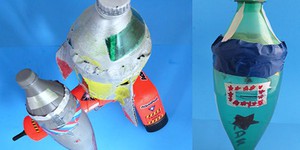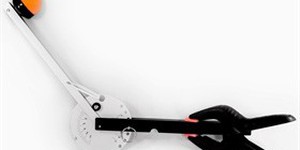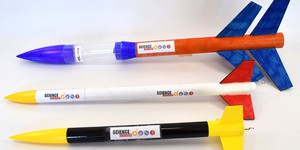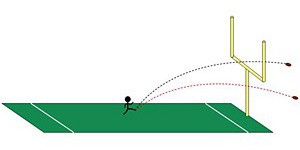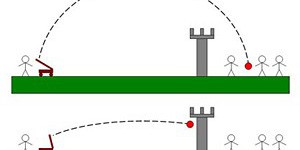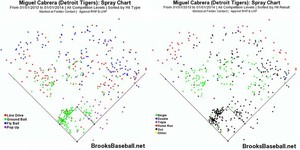Seventh Grade, Experiment with Projectiles Science Projects (13 results)
Explore the mechanics of projectiles, objects that are in motion and are only encountering the force of gravity. As part of a hands-on experiment, throw, launch, kick, or drop an object to turn it into a projectile and measure what happens.
|
3... 2... 1... 0— blastoff! In this science project, you will use a bottle rocket launcher to launch your own bottle rocket. You will load it with water and pressurized air, make several launches, and find out what makes your rocket soar the highest.
Read more
Featured
Have you heard that garlic powder is supposed to inhibit the growth of bacteria? Which do you think would make a better disinfectant: a solution of garlic powder or a solution of bleach? This project shows you a straightforward way to compare the effectiveness of different disinfectants (or other antimicrobial agents), by measuring zones of inhibition on a culture plate.
Read more
Have you ever seen a "Hail Mary" football pass, where the quarterback tries to throw the ball as far as possible to reach the end zone and score a touchdown? Or a last second game tying soccer goal from midfield? How far the ball will go does not just depend on how hard a player throws or kicks it; it also depends on the angle at which the player launches the ball. In this sports science project, you will investigate how launch angle affects the distance that a ball travels by filming…
Read more
New
Does your dog get bored when you are not home? Do you ever toss them a few treats right before you head out the door? What if you could keep them busy by automatically dispensing treats throughout the day? What about training them to sit in a certain place or even press a button by automatically rewarding them with treats? In this project you will build your own automatic dog (or cat, or other pet) treat dispenser that you can customize to react to different sensors.
Read more
Rockets are definitively an engineering challenge. These amazing gravity-defying machines have lifted test material, people, and even animals into space. Feel like building one yourself? In this science project, you will transform a water bottle into an aerodynamic bottle rocket with two compartments, one for the fuel and one for a payload. You will then test how well it performs when lifting mass vertically up into the air. Ready, set, soar!
Read more
If you were in a raiding army in the Middle Ages, a catapult would come in mighty handy for taking down castle walls. But only if you could aim it reliably! With this science project, you will try your hand at catapult technology. Using a rubber-band-powered catapult you will send ping pong balls flying through the air. The catapult's design makes it easy to measure and repeat how hard the ball is launched and its direction, so you can find the right catapult settings to hit the target reliably.
Read more
So baseball's your game? Well, slugger, science and math abound in baseball. Just look at the zillions of "stats." In this project, you can produce some interesting baseball statistics of your own and perhaps settle a long-standing debate. You'll set up experiments at your local playing field to find out which type of bat is better, wood or aluminum. Play ball, and batter up!
Read more
New
Have you ever noticed that on a hot day, it's more comfortable to wear a light-colored shirt than a dark one? Or that it's cooler in a park than walking down a street? This happens because different surfaces absorb and reflect heat in different ways. Urban heat islands are parts of cities where man-made surfaces like pavement and buildings replace natural surfaces like grass and trees. In this project, you will use temperature and satellite data to see if certain areas in a city have higher…
Read more
What does it take to launch a robot to Mars or for a satellite to explore our outer solar system? In this project you will explore the physics of a rocket as you predict its performance, launch it, and measure the actual results. This is rocket science!
Read more
Did you know that throwing, kicking, and punting a football all involve the science of projectile motion? A star NFL® quarterback, kicker, and punter each need to have a very good understanding of how a football moves through the air in order to help them win games. In this science project, you will set up a rubber band-powered catapult to represent a field goal kicker, and study how changing the distance from the goalposts affects how hard it is to accurately kick a field goal.
Read more
You may have seen movies or read books where armies in medieval times catapulted large rocks or
other objects at castles (or each other!). These armies used different types of catapults to
accomplish different goals — for example, launching things over or into castle
walls to knock them down. In this experiment, you will use a ping-pong ball catapult to lay
siege to a "castle" and find the right settings to hit your targets.
Read more
How high can you throw different types of balls, like a golf ball, a basketball, and a football? Would one of them go higher than the others? Do factors like mass, shape, and volume influence the final height? You can measure the approximate maximum height a thrown ball reaches by measuring the time it spends in the air.
To do this project, you'll need at least one ball and a helper with a stopwatch. Your helper should start timing just as you release the ball, and stop right when the ball…
Read more
In baseball, coaches use hit charts to track the results of every hit each player makes, giving a measure of the player's performance. Have you ever wondered what things affect where a baseball goes when a player hits it with a bat? In this project you will set up an experiment to hit a ping pong ball in a controlled manner using a toy catapult, then learn about the physics of baseball by making your own hit chart.
Read more
|
Explore Our Science Videos
How to Make Magnetic Slime
Write and Read Braille – STEM activity
Make a Whirlybird from Paper







